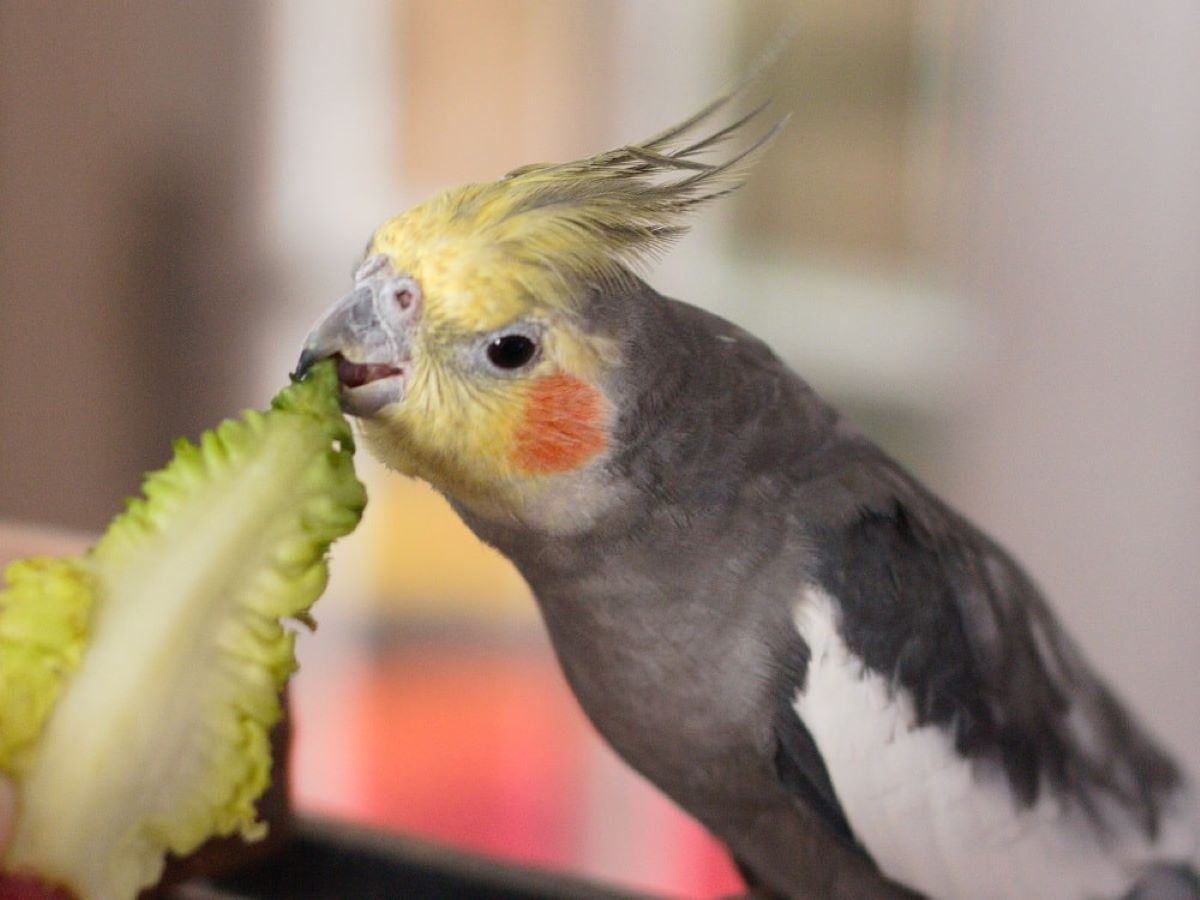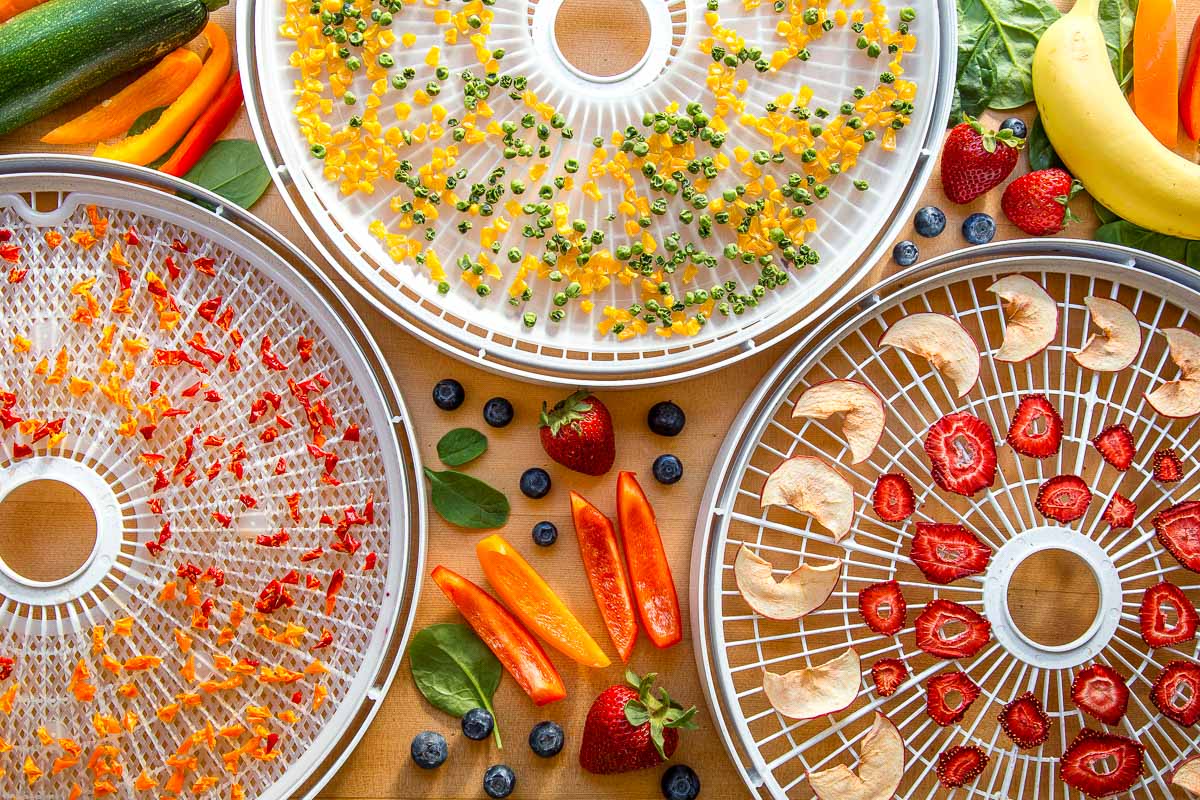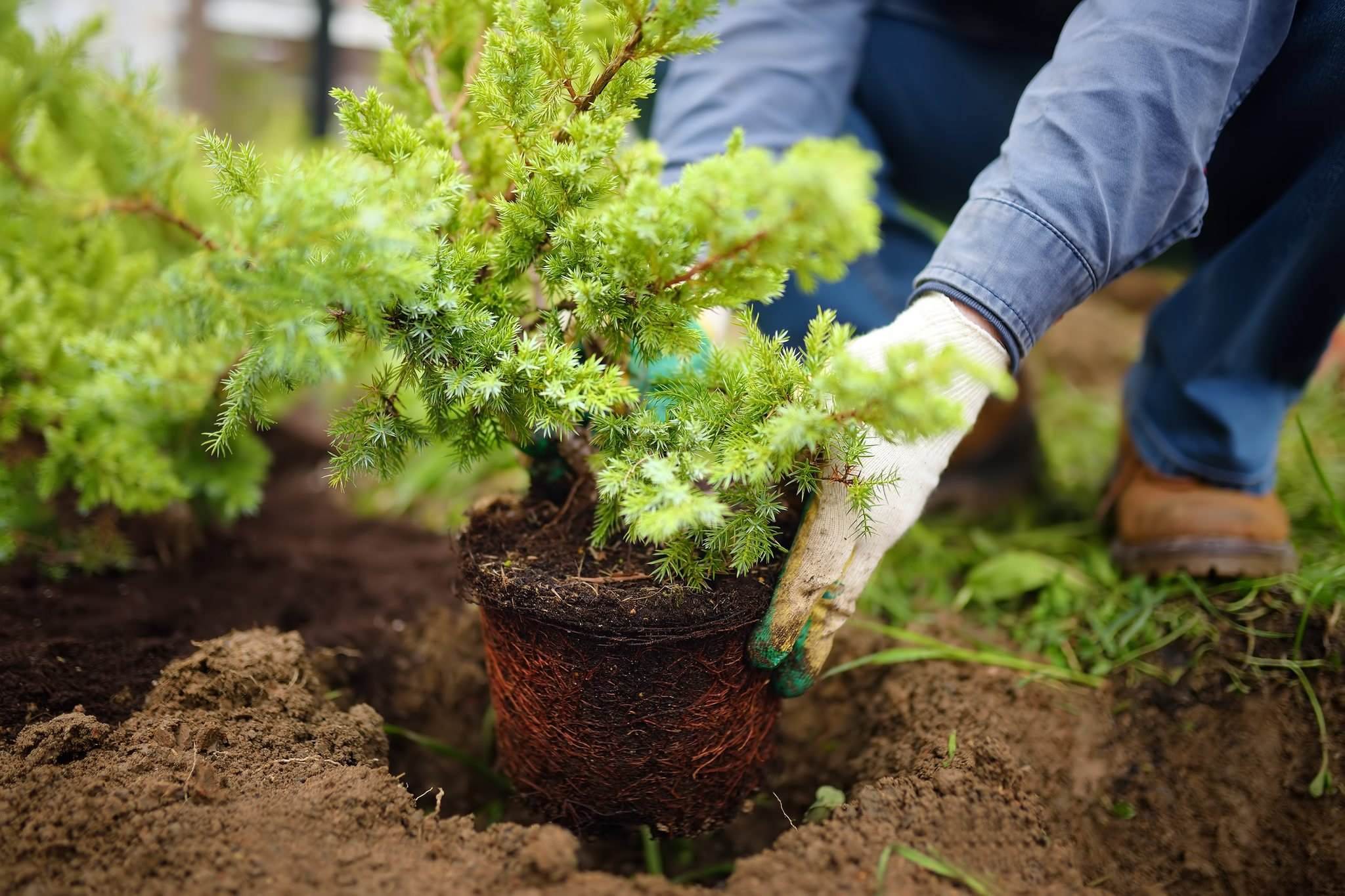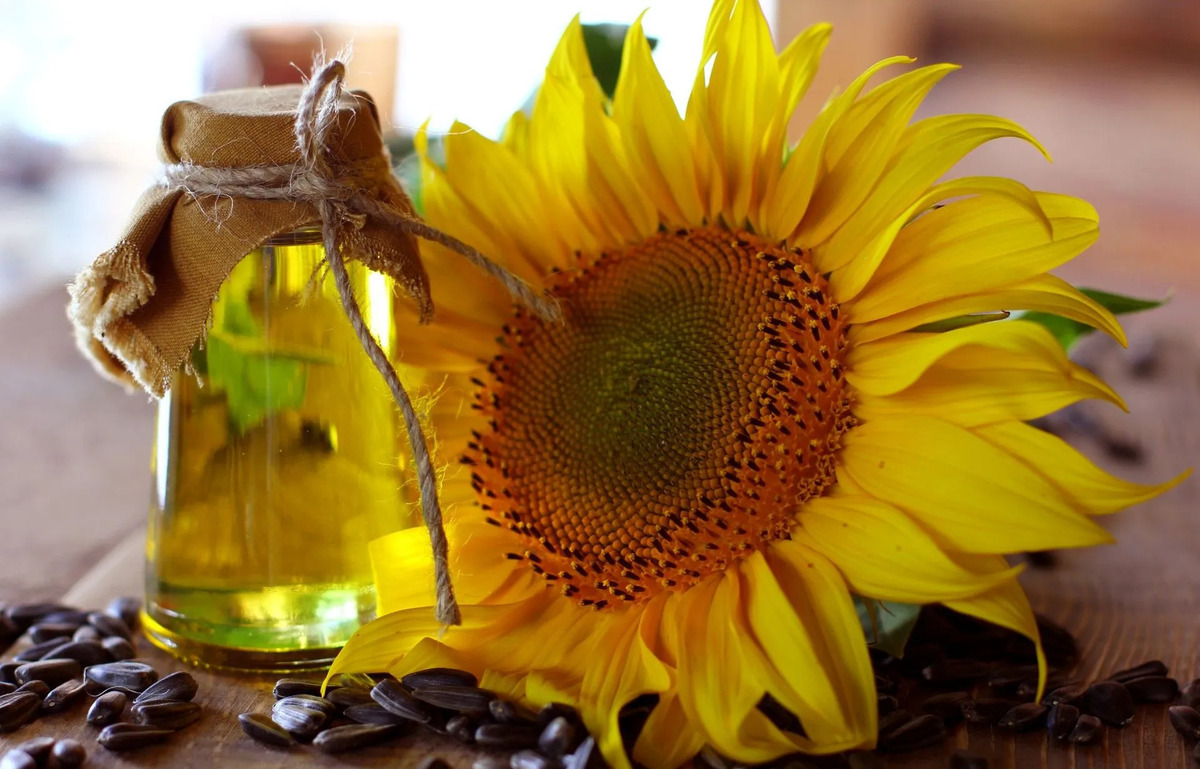Home>Gardening Techniques>Seasonal Gardening>What Vegetables Can You Plant In June
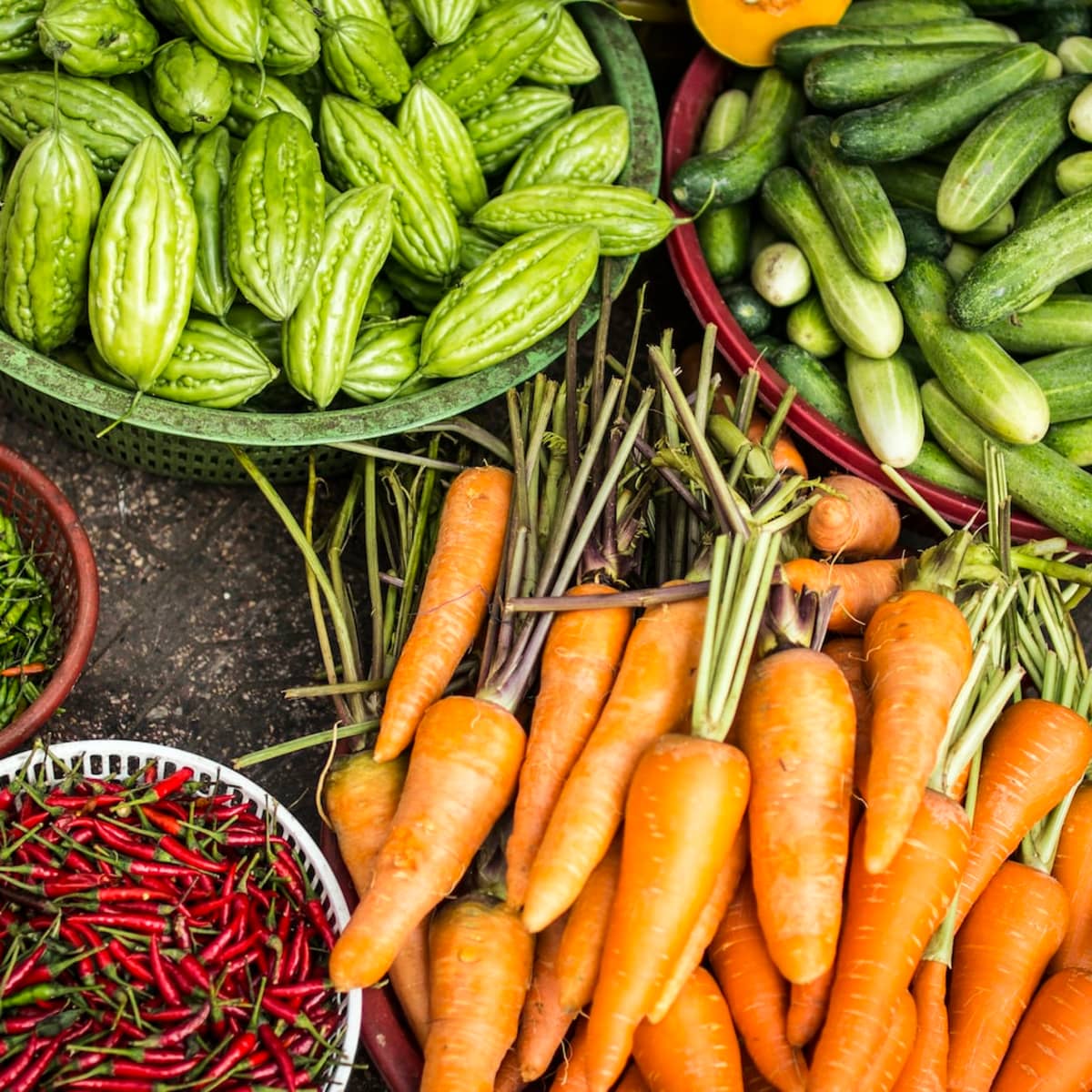

Seasonal Gardening
What Vegetables Can You Plant In June
Modified: January 22, 2024
Discover the best vegetables for your summer garden with our expert guide to seasonal gardening. Find out what vegetables you can plant in June for a bountiful harvest.
(Many of the links in this article redirect to a specific reviewed product. Your purchase of these products through affiliate links helps to generate commission for Chicagolandgardening.com, at no extra cost. Learn more)
Table of Contents
Introduction
As June rolls around, gardeners are eagerly anticipating the abundance of fresh produce that awaits them. This is the perfect time to plant a variety of vegetables that will thrive in the warm weather and long sunny days. Whether you are an experienced gardener or just starting out, the month of June offers a prime opportunity to grow a bountiful vegetable garden.
The summer season brings optimal conditions for vegetables to flourish. The longer days and increased sunlight provide ample energy for plants to grow and produce an abundance of flavorful and nutritious crops. Additionally, the warmer temperatures allow for faster germination and growth, resulting in a shorter time to harvest.
Planting vegetables in June opens up a world of possibilities for your garden. From juicy tomatoes to crisp cucumbers, there are numerous vegetables that can be sown during this time to enjoy a fresh, homegrown harvest later in the season. Whether you have a spacious backyard garden, a small balcony, or even just a sunny spot on your patio, there are options to suit every gardener’s needs.
In this article, we will explore ten vegetables that are perfect for planting in June. These vegetables are known for their ability to thrive in the summer heat and are sure to delight your taste buds when it comes time to harvest. So grab your gardening tools and get ready to sow some seeds!
Tomatoes
No summer garden is complete without the vibrant and juicy tomatoes. June is the ideal time to plant tomato seedlings or transplants, as the soil has warmed up and the risk of frost has passed in most regions.
Tomatoes thrive in full sunlight, so ensure that the chosen planting location receives at least 6-8 hours of direct sunlight daily. When selecting tomato varieties, consider your preferences for taste, size, and color. There are numerous options to choose from, including heirloom, cherry, beefsteak, and plum tomatoes.
Prepare the soil by adding organic matter, such as compost, to enhance its fertility and drainage. Dig a hole large enough to accommodate the root ball of the seedling and gently place it in the hole. Fill in the surrounding soil, firming it gently around the base of the plant.
Water the newly planted tomatoes thoroughly and provide regular watering throughout the growing season. Be sure to water at the base of the plant to avoid wetting the foliage, as this can increase the risk of diseases.
Tomatoes are heavy feeders, so it’s important to provide them with regular fertilization. You can use a balanced vegetable fertilizer or incorporate slow-release fertilizer into the soil at planting time.
As the tomato plants grow, provide them with support such as stakes, cages, or trellises to keep the branches upright and prevent breakage. Prune the plants by removing the suckers (small shoots that emerge from the leaf axils) to encourage larger fruit production.
Harvesting time varies depending on the tomato variety, but generally, you can expect to harvest ripe tomatoes 60-80 days after planting. Once the tomatoes reach their desired ripeness, gently twist or cut the fruit from the stem.
Tomatoes are versatile and can be enjoyed fresh in salads, sandwiches, or sauces. They can also be preserved by canning, freezing, or drying for year-round enjoyment.
So get ready to savor the taste of homegrown tomatoes by planting them in your garden this June. Their vibrant colors and succulent flavors will undoubtedly elevate your summer meals.
Cucumbers
Cucumbers are a refreshing and versatile vegetable that thrives in the warm summer months. They are an excellent addition to any garden, and planting them in June ensures a plentiful harvest.
Start by selecting cucumber varieties that suit your preferences. Whether you prefer crunchy pickling cucumbers or juicy slicing cucumbers, there are many options to choose from. Look for disease-resistant varieties to ensure a successful crop.
Cucumbers require at least 6-8 hours of direct sunlight daily, so choose a location that provides ample sunlight. Prepare the soil by incorporating organic matter to improve drainage and fertility. You can also add a layer of mulch to help retain moisture and prevent weed growth.
Sow the cucumber seeds directly into the garden soil, spacing them about 1 inch deep and 12-24 inches apart, depending on the variety. Water the soil thoroughly after planting and keep it consistently moist throughout the growing season.
Support the cucumber plants by providing trellises or stakes for them to climb. This helps maximize space in the garden and promotes healthy airflow, reducing the risk of disease. As the plants grow, train the vines to climb the supports gently.
Regularly check the plants for pests, such as cucumber beetles or aphids, and take appropriate measures to control them. This can include using organic insecticides or attracting beneficial insects to your garden.
Harvesting cucumbers should be done when the fruits are firm and have reached the desired size. Depending on the variety, this can range from 2-8 inches long. Cut the cucumbers from the vine using a sharp knife or pruning shears, being careful not to damage the plant.
Cucumbers can be enjoyed fresh in salads, sandwiches, or gazpacho soup. They can also be pickled or used to make homemade relish. With their crisp texture and refreshing taste, cucumbers are a delightful addition to your summer meals.
So don’t miss out on growing your own cucumbers this June. With a little care and attention, you’ll be rewarded with a bountiful harvest of this versatile and delicious vegetable.
Zucchini
Zucchini, with its vibrant green skin and delicious flavor, is a staple in many summer dishes. Planting zucchini in June ensures a plentiful supply of this versatile vegetable throughout the summer season.
Choose a sunny location in your garden that receives at least 6-8 hours of sunlight each day. Zucchini plants require well-draining soil that has been enriched with organic matter. Prepare the soil by adding compost or aged manure to improve its fertility and texture.
Directly sow zucchini seeds into the ground, spacing them about 1 inch deep and 2-3 feet apart. You can also plant zucchini transplants if you prefer a head start. Water the seeds or transplants immediately after planting, ensuring that the soil is evenly moist.
Keep the soil consistently moist throughout the growing season. Mulching around the plants helps retain moisture and suppresses weed growth. Water deeply at the base of the plants, avoiding wetting the foliage to prevent the development of diseases.
Zucchini plants have large leaves that can shade out weeds, reducing competition for nutrients and water. However, it is still important to regularly check for weeds and remove them by hand or using a shallow hoe.
Fertilize the zucchini plants regularly with a balanced vegetable fertilizer. This will provide them with the necessary nutrients for optimal growth and fruit production. Follow the instructions on the fertilizer packaging for proper application rates.
Harvest zucchini when the fruits are small to medium-sized, typically around 6-8 inches long. Larger zucchini can become tough and develop an undesirable texture. Use a sharp knife or pruners to cut the zucchini from the stem, being careful not to damage the plant.
Zucchini can be prepared in a variety of ways, including sautéing, grilling, baking, or even spiralizing for a healthy pasta substitute. It’s a versatile vegetable that can be incorporated into stir-fries, salads, bread, and countless other recipes.
Grow your own zucchini this June and add a touch of freshness and flavor to your summer meals. With a little care and attention, you’ll be rewarded with a bumper crop of zucchini to enjoy throughout the season.
Bell Peppers
Bell peppers are not only beautiful and colorful, but they also add crunch and sweetness to a variety of dishes. June is the perfect time to plant bell pepper seedlings or transplants in your garden, as they thrive in the warm summer weather.
Choose a sunny location in your garden where the bell peppers can receive 6-8 hours of direct sunlight each day. The soil should be well-draining and enriched with organic matter, such as compost or aged manure, to provide essential nutrients.
Plant the bell pepper seedlings or transplants in holes that are deep enough to accommodate their root balls. Space the plants 12-18 inches apart, allowing room for foliage growth and air circulation. Firmly press the soil around the base of the plants to ensure stability.
Water the bell pepper plants thoroughly after planting and maintain consistent soil moisture throughout the growing season. Use a soaker hose or drip irrigation system to deliver water directly to the plants’ roots, avoiding wetting the foliage.
Fertilize the bell pepper plants every 4-6 weeks with a balanced vegetable fertilizer. This will provide them with the necessary nutrients for healthy growth and high yields. Be sure to follow the instructions on the fertilizer packaging for proper application amounts.
As the bell pepper plants grow, they may need additional support as their fruits develop. Stake them or provide cages to prevent the branches from bending or breaking under the weight of the peppers. Prune any overcrowded or non-productive branches to promote better air circulation and fruit development.
Harvest bell peppers when they reach their desired size and color. Most bell peppers start off green and then mature to yellow, orange, or red, depending on the variety. Use a sharp knife or pruning shears to cut the peppers from the plant, leaving a short stem attached.
Bell peppers are delicious when enjoyed fresh in salads, stir-fries, or stuffed with savory fillings. They can also be roasted, grilled, or sautéed to bring out their full flavor. With their vibrant colors and sweet taste, bell peppers add a vibrant touch to any dish.
Plant bell peppers in your garden this June, and soon you’ll be enjoying a bountiful harvest of these delightful and versatile vegetables.
Green Beans
Green beans, also known as string beans or snap beans, are a classic summer vegetable. With their crisp texture and vibrant green color, they are a delightful addition to any garden. June is the perfect time to plant green beans, as they thrive in the warm weather and mature relatively quickly.
Choose a sunny location in your garden that receives at least 6-8 hours of direct sunlight each day. Green beans prefer well-draining soil with a slightly acidic pH. Improve the soil fertility by incorporating organic matter, such as compost or well-rotted manure.
There are two main types of green beans: bush beans and pole beans. Bush beans are compact and require no support, making them ideal for smaller gardens or containers. Pole beans, on the other hand, are climbing plants that need trellises or supports to grow vertically.
Sow green bean seeds directly into the garden soil, planting them about 1-2 inches deep and spacing them according to the variety’s recommendations. If you’re planting pole beans, set up the trellises or supports before planting the seeds. Water the soil immediately after planting and keep it consistently moist.
Green beans are relatively low-maintenance plants, but it’s important to keep an eye out for common pests, such as aphids or bean beetles. Regularly inspect the plants and take appropriate measures, such as using insecticidal soap or attracting beneficial insects, to keep pest populations under control.
Harvest green beans when they are young and tender, typically when the pods are about 4-6 inches long. Harvesting regularly encourages the plants to produce more beans. Use scissors or your fingers to gently snap off the beans from the plant, being careful not to damage the stems.
Green beans are incredibly versatile in the kitchen. They can be steamed, boiled, stir-fried, or even grilled. They are a wonderful addition to salads, soups, and casseroles. They can also be preserved by canning or freezing, allowing you to enjoy their fresh taste even after the growing season has ended.
Plant green beans in your garden this June, and soon you’ll be savoring the delicious taste and satisfying crunch of homegrown green beans. Whether you choose bush beans or pole beans, they are sure to be a standout in your summer harvest.
Radishes
If you’re looking for a quick-growing and easy-to-grow vegetable, radishes are a perfect choice. These vibrant and crunchy root vegetables can be planted in June for a fast and satisfying harvest.
Radishes prefer cool weather, so planting them in early June ensures they can mature before the hot summer temperatures arrive. Choose a location in your garden that receives at least 6 hours of direct sunlight each day.
Prepare the soil by removing any debris and loosening it with a garden fork or tiller. Radishes prefer well-draining soil, so add compost or organic matter to improve its texture. You can also mix in a balanced fertilizer to provide essential nutrients.
Sow the radish seeds directly into the soil, spacing them about 1 inch apart and planting them about ½ inch deep. Cover the seeds with soil and gently firm it down. Water the soil thoroughly after sowing, and keep it moist throughout the growing season.
As radishes grow quickly, you should start seeing seedlings emerge within a week. Thin the seedlings to provide enough space for the remaining plants to develop. Aim for a spacing of 2-3 inches between the radishes.
Radishes require consistent moisture but avoid overwatering, as this can lead to splitting or rotting of the roots. Once the roots have reached the desired size, typically around 1-2 inches in diameter, they are ready to be harvested.
To harvest radishes, gently loosen the soil around the base of the plants and pull the roots out. Alternatively, you can use a small garden fork to lift them. Trim off the tops and wash the radishes thoroughly before using them.
Radishes are a versatile vegetable that can be enjoyed in a variety of ways. They add a refreshing crunch to salads, sandwiches, and tacos. You can also pickle them for a tangy and flavorful treat. Don’t forget to use the radish leaves too! They can be used in salads or sautéed as a nutritious side dish.
Take advantage of the fast-growing nature of radishes and plant them in your garden this June. You’ll be rewarded with a colorful and tasty harvest in just a few weeks.
Carrots
Deliciously sweet and packed with nutrients, carrots are a popular vegetable that can be easily grown in your garden. June is the perfect time to plant carrots, as they love the cool weather of spring and early summer.
Choose a sunny spot in your garden that receives at least 6 hours of direct sunlight each day. Carrots prefer loose, well-draining soil, so it’s important to prepare the planting bed by removing any rocks or debris and loosening the soil.
Sow carrot seeds directly into the soil, placing them about a quarter to a half-inch deep. Carrot seeds are tiny, so a light sprinkling is sufficient. Allow about 2-3 inches of space between each seed to give the carrots enough room to grow.
Keep the soil consistently moist during the germination period, which typically takes 10-20 days. To aid in moisture retention and prevent weed growth, you can mulch around the carrot plants with straw or compost.
As the carrot seedlings grow, thin them to maintain proper spacing. You may need to do this a couple of times to ensure the carrots have enough room to develop their desirable size and shape. Thin the seedlings by carefully pulling out the weaker ones, leaving only the strongest plants.
Carrots grow best in soil that is free of rocks and clumps, so it’s important to keep the soil well-cultivated around the plants. Avoid excessive fertilization, as it can cause the carrots to develop hairy or forked roots. Instead, incorporate compost or well-rotted manure into the soil before planting for added nutrients.
Harvest carrots when they have reached the desired size and color. This can vary depending on the carrot variety, but they are typically ready to harvest around 60-80 days after planting. Gently loosen the soil around the carrots and carefully lift them out. If the soil is compacted, use a garden fork to lift the carrots without breaking them.
Carrots are a versatile vegetable that can be enjoyed both raw and cooked. Add them to salads, stir-fries, or roast them for a delicious side dish. Their natural sweetness adds a delightful flavor to any meal, making them a staple in many kitchen gardens.
Plant carrots in your garden this June and revel in the joy of harvesting your own homegrown, vibrant and tasty carrots. Their fresh crunch and sweet flavor will undoubtedly elevate your culinary experiences.
Lettuce
Lettuce is a versatile and nutritious leafy green that is a staple in many salads and sandwiches. Planting lettuce in June allows you to enjoy a continuous harvest throughout the summer, as it thrives in cooler temperatures.
Choose a location in your garden that receives partial shade, especially during the hot afternoon hours. Lettuce prefers cooler conditions and can bolt or become bitter when exposed to excessive heat. However, some heat-tolerant varieties are available if you have limited shade options.
Prepare the soil by incorporating organic matter, such as compost or well-rotted manure, to enrich it with nutrients and improve its moisture retention. Lettuce prefers well-draining soil, so avoid areas prone to waterlogging.
Sow lettuce seeds directly into the garden soil, scattering them thinly and covering them with a light layer of soil. Space the seeds according to the variety’s recommendations, usually about 6-12 inches apart. In hot climates, you can plant lettuce in rows oriented from north to south to provide some shade for neighboring plants.
Keep the soil evenly moist, especially during germination and seedling stages. Mulching around the lettuce plants with straw or compost can help conserve moisture and suppress weed growth.
Thin the lettuce seedlings once they have developed a couple of true leaves. Remove the weaker seedlings, leaving only the healthiest ones with enough spacing to grow and mature. These thinnings can be enjoyed in salads or used as microgreens.
Regular watering is essential to prevent lettuce from becoming bitter or developing a tough texture. Aim to keep the soil consistently moist but avoid overwatering to prevent root rot.
Lettuce is a quick-growing crop, and depending on the variety, you can start harvesting baby leaves within a few weeks. For loose-leaf lettuce, you can harvest individual leaves as needed, allowing the plants to continue growing. For head lettuce, wait until the heads are firm and fully formed before harvesting.
Enjoy lettuce in a variety of salads, sandwiches, or wraps. Its crisp and refreshing texture pairs well with other garden vegetables and a simple vinaigrette dressing. Harvesting your own homegrown lettuce ensures freshness and provides a satisfying sense of accomplishment.
Plant lettuce in your garden this June and delight in a continuous harvest of this versatile and nutritious leafy green. Its vibrant colors and flavors will elevate your summer meals.
Spinach
Spinach is a nutrient-packed leafy green that thrives in the cooler temperatures of spring and early summer. Planting spinach in June allows you to enjoy its fresh and vibrant leaves before the onset of hotter weather.
Choose a location in your garden that receives partial shade or dappled sunlight. Spinach prefers cooler conditions and can bolt, or go to seed prematurely, in excessive heat. However, some heat-tolerant varieties are available if you have limited shade options.
Prepare the soil by incorporating organic matter, such as compost or aged manure, to improve its fertility and moisture retention. Spinach thrives in well-draining soil rich in organic nutrients.
Sow spinach seeds directly into the garden soil, planting them about half an inch deep. Space the seeds according to the variety’s recommendations, usually about 2-4 inches apart. If you prefer, you can start spinach seeds indoors a few weeks before planting them outside.
Keep the soil consistently moist, but avoid overwatering to prevent root rot. Mulching around the spinach plants with straw or compost can help conserve moisture and suppress weed growth.
Thin the spinach seedlings once they have a few true leaves. Remove the weaker seedlings, providing enough space for the remaining plants to develop. These thinnings can be enjoyed in salads or used as microgreens.
Regularly monitor the spinach plants for pests, such as aphids or slugs, and take appropriate measures to control them. This may include handpicking, using organic insecticides, or encouraging natural predators.
Harvest spinach leaves when they reach the desired size, typically around 4-6 inches in length. You can either selectively pick individual leaves or cut the whole plant at the base. Harvesting outer leaves encourages continued growth and allows for multiple harvests.
Spinach is incredibly versatile and can be enjoyed in a variety of dishes, both raw and cooked. Add it to salads, smoothies, or sandwiches for a nutrient boost. Spinach also makes a delicious addition to stir-fries, quiches, soups, and pasta dishes.
Plant spinach in your garden this June, and savor the fresh and nutritious harvest of this leafy green. Its vibrant color and distinct flavor will elevate your culinary creations and contribute to a healthy diet.
Herbs
Herbs are a delightful addition to any garden, adding fresh flavors and aromatic scents to your dishes. June is an excellent time to plant herbs, as the warm weather and longer days provide optimal growing conditions.
There are a wide variety of herbs to choose from, each with its own unique taste and culinary uses. Some popular herbs to consider planting in June include basil, mint, cilantro, dill, parsley, and rosemary.
Start by selecting a sunny location in your garden for your herb plants. Most herbs prefer at least 6 hours of direct sunlight per day. However, some herbs, like mint and parsley, can tolerate partial shade.
Prepare the soil by amending it with organic matter, such as compost or well-rotted manure, to improve fertility and drainage. Herbs generally prefer well-draining soil, so ensure that excess water can easily drain away.
Plant the herb seedlings or transplants according to their specific requirements. Dig a hole that is slightly larger than the root ball of the plant, place the plant in the hole, and firm the soil around it. Leave enough space between the plants to allow for proper air circulation and growth.
Water the herb plants immediately after planting to help them settle into their new environment. Afterward, provide regular watering to keep the soil evenly moist. Be careful not to overwater, as this can cause root rot and other fungal diseases.
Herbs generally do not require heavy fertilization. A light application of a balanced organic fertilizer or compost in the planting hole is usually sufficient. Too much nitrogen can result in excessive leaf growth and a decrease in essential oils.
Harvest herbs as needed by picking the leaves or sprigs from the plants. Regular harvesting encourages bushier growth and maximizes the flavor of the herbs. For the best flavor, harvest herbs in the morning after the dew has dried but before the heat of the day.
Enjoy your freshly harvested herbs in a variety of dishes. Use basil in pasta sauces and Caprese salads, mint in refreshing beverages and desserts, cilantro in salsas and Asian-inspired dishes, dill in pickles and fish dishes, parsley in soups and salads, and rosemary in roasted meats and potatoes.
Adding herbs to your garden not only enhances your culinary experiences but can also attract helpful pollinators. Planting herbs with beautiful flowers, such as lavender or thyme, can bring additional color and fragrance to your garden.
Plant a variety of herbs in your garden this June and let their flavors and aromas elevate your cooking to new heights. Whether you have a dedicated herb garden or space within your vegetable garden, these versatile plants are sure to enhance your culinary creations.



